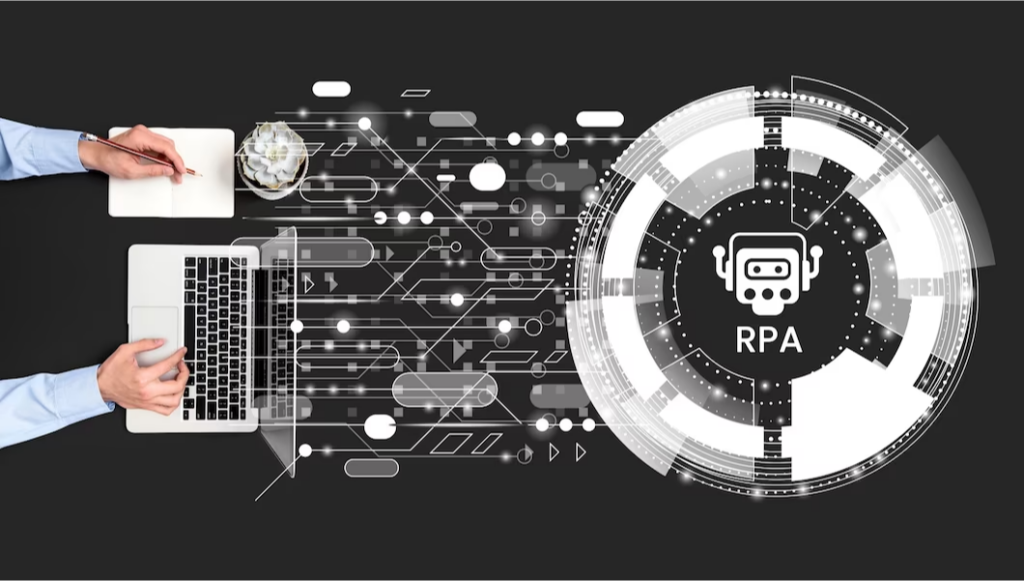
Robotic Process Automation (RPA) is one of today’s most transformative technologies. By automating repetitive, time-consuming tasks, RPA can help businesses streamline their operations, reduce costs, and improve efficiency. However, to fully realize the benefits of RPA, it’s essential to scale and expand the technology across your organization. In this blog, we’ll provide you with tips and strategies for scaling and expanding RPA to ensure you’re getting the most out of your investment.
Conducting a Process Audit
Before scaling and expanding RPA, conducting a process audit is essential to identify the most suitable processes for automation. This involves examining your existing processes and determining which ones are most repetitive, time-consuming, and prone to errors. By automating these processes, you can free up your employees’ time to focus on more valuable tasks and ensure greater accuracy and efficiency. Additionally, by identifying the strategies that are best suited for automation, you can ensure that you’re investing your resources in the most effective way possible.
Establishing a Center of Excellence (CoE)
To ensure the success of your RPA initiative, it’s crucial to establish a Center of Excellence (CoE) that will oversee the technology’s implementation, management, and maintenance. This CoE should have clear goals and objectives and work closely with other departments to ensure a smooth transition to RPA. By having a dedicated team focused on RPA, you can ensure that the technology is properly integrated into your organization and that you can leverage its full potential.
Developing a Governance Framework
Developing a governance framework is crucial to ensure that your RPA initiative is aligned with your overall business goals and that all stakeholders are involved in the process. This framework should include clear roles and responsibilities and a change management process to ensure that any changes to the RPA system are implemented smoothly and with minimal disruption. Additionally, the governance framework should ensure that the RPA system complies with all relevant regulations and standards, reducing the risk of regulatory issues.
Selecting the Right RPA Tools and Technologies
Selecting the right RPA tools and technologies is crucial to ensure that your RPA system is scalable and flexible. When evaluating RPA tools and technologies, it’s important to look for advanced features and capabilities. Some of the most important features to consider include:

- Natural Language Processing (NLP): NLP enables your RPA system to understand and interpret human language, making it easier to automate written or spoken communication processes.
- Machine Learning (ML): ML enables your RPA system to learn from past experiences and adapt to new situations, making it more flexible and capable of handling complex processes.
- Optical Character Recognition (OCR): OCR enables your RPA system to read and interpret a text from scanned documents, making it easier to automate processes that involve physical documents.
- Integration Capabilities: Look for tools and technologies that can be easily integrated with your existing system.
Other than advanced features and capabilities, here are some key considerations to help you select the right RPA tools and technologies:
- Functionality: The RPA tools and technologies you choose should have the necessary functionality to automate your specific processes. Look for tools that can handle various types of data inputs, integrate with your existing systems, and offer advanced features such as natural language processing and machine learning.

- Scalability: Ensure that the RPA tools and technologies you select can scale with your organization’s growth. Consider tools that can handle a large volume of processes and be easily modified and expanded.
- Flexibility: The RPA tools and technologies should be flexible and adaptable to your organization’s changing needs. Consider tools that allow you to modify and update your automation processes without significant downtime.
- Ease of use: The tools and technologies you select should be user-friendly and easy to implement. Look for tools that have a simple interface and require minimal coding knowledge.
- Cost: RPA tools and technologies can vary significantly in cost. Consider the total cost of ownership, including licensing fees, implementation costs, and ongoing maintenance costs, when selecting the tools and technologies that align with your budget.
- Security: Ensure that the RPA tools and technologies you choose have robust security features and comply with your organization’s security policies and regulations.
Developing a Scalable and Flexible RPA Architecture
Finally, it’s essential to develop a scalable and flexible RPA architecture that can adapt to your changing business needs. Here are some key considerations to help you develop a scalable and flexible RPA architecture:
- Cloud-based technologies: Consider leveraging cloud-based technologies to ensure that your RPA system can scale as needed. Cloud-based technologies can provide the necessary infrastructure to support your RPA processes while offering flexibility and scalability.
- Modular design principles: Implementing modular design principles in your RPA architecture can help ensure that your system can be easily expanded and modified. You can quickly modify and update your RPA processes without significant downtime by breaking them into smaller modules.
- AI and Machine Learning capabilities: Consider integrating artificial intelligence and machine learning capabilities into your RPA architecture. These technologies can help to further automate your processes, improve efficiency, and reduce the need for human intervention.
- Integration with other systems: Your RPA system should be able to seamlessly integrate with your existing systems, such as ERP, CRM, or BPM systems. This will help ensure that your RPA processes are aligned with your overall business processes and can provide value across the organization.
- Compliance: Ensure that your RPA architecture complies with all relevant regulations and standards. This includes ensuring that your RPA system follows data privacy regulations and that any data stored or processed by your RPA system is secure.
By incorporating these considerations into your RPA architecture, you can develop a scalable and flexible RPA system that can adapt to your organization’s changing needs. This will help you maximize the ROI of your RPA initiative and achieve greater efficiency and productivity across the organization.
Final thoughts
By following these tips and strategies for scaling and expanding RPA, you can ensure you get the most out of your investment and maximize your ROI. Remember to conduct a process audit, establish a CoE, develop a governance framework, select the right tools and technologies, and develop a scalable and flexible RPA architecture. With these strategies in place, you can take your RPA initiative to the next level and reap the benefits of this powerful technology. By embracing RPA and continually optimizing its use, you can unlock new levels of efficiency, reduce costs, and stay ahead of the competition.











